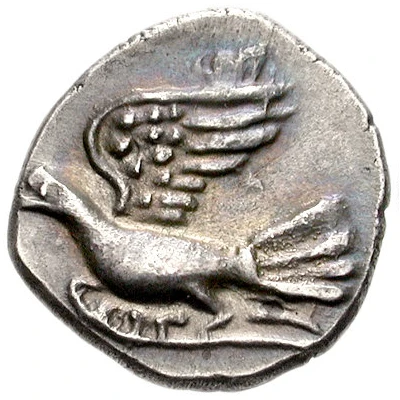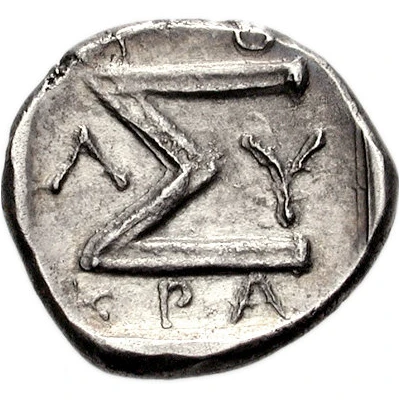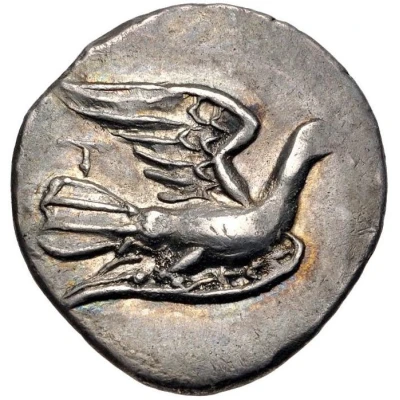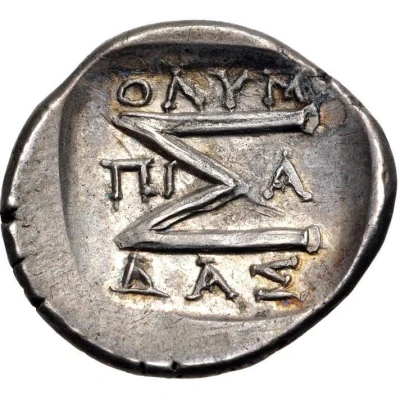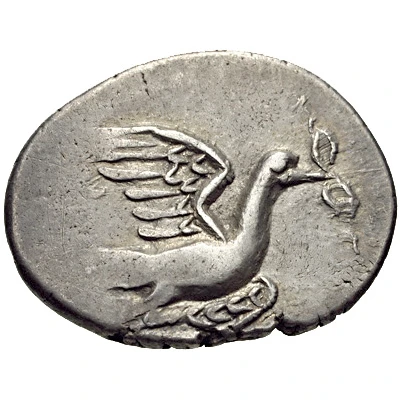
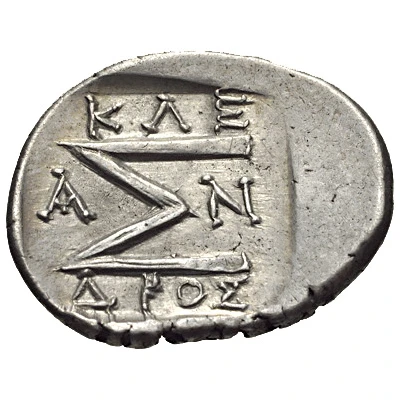

© Classical Numismatic Group, Inc.
Triobol 100 BC - 60 BC
| Silver | 2.21 g | 16.0 mm |
| Issuer | Sikyon (Sikyonia) |
|---|---|
| Type | Standard circulation coin |
| Years | 100 BC - 60 BC |
| Value | 1 Triobol = ½ Drachm |
| Currency | Drachm |
| Composition | Silver |
| Weight | 2.21 g |
| Diameter | 16.0 mm |
| Shape | Round (irregular) |
| Technique | Hammered, Incuse |
| Demonetized | Yes |
| Updated | 2024-10-10 |
| Numista | N#149498 |
|---|---|
| Rarity index | 100% |
Reverse
Large Σ, magistrate’s name around and all within incuse square
Script: Greek
Lettering: ΚΛΕΑΝΔΡΟΣ
Interesting fact
The Triobol coin from Sikyon was used as a form of currency in ancient Greece during the 1st century BC. Its name "Triobol" comes from the Greek word "triobolos," meaning "three-piece," which refers to the three pellets or small balls that were often depicted on the coin's reverse side. These pellets were believed to represent the three sons of the Greek god Apollo, who were associated with the city of Sikyon. The coin's obverse side typically featured the image of a mythical creature, such as a griffin or a sphinx, while the reverse side often depicted various symbols and images related to the city's culture and mythology. Despite its small size and relatively low value, the Triobol coin played an important role in the ancient Greek economy and was widely used for trade and commerce throughout the region.
